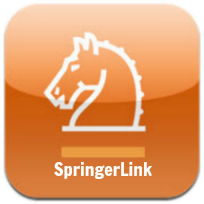Editorial > Published: Lukas Radbruch & Winfried Häuser > Der Schmerz volume 34, pages115–116(2020)
The discussion about the importance of cannabinoids runs like a thread through the last years of the magazine Der Pain, most recently with the focus on cannabinoids in summer 2019 [4].
In a series of reviews, the mostly weak evidence for the various indications was summarized and after the amendment to the Narcotics Act 2017, which also allowed medicinal cannabis flowers or cannabis extract in pharmaceutical quality to be prescribed on a narcotic prescription, several warnings against uncritical use and too high expectations [7, 12].
While the discussion about tetrahydrocannabinol (THC) and cannabis flowers and extracts is not yet over, cannabidiol (CBD) is now appearing as a new star in the sky. The medical use of CBD has attracted a great deal of interest not only among experts, but also among the general public in recent years [11].
An epidemiological study from New Zealand on 400 patients treated with CBD indicated relief from non-tumor-related pain, symptoms due to neurological disorders, mental disorders such as anxiety or depression or tumor-related symptoms [6].
In a survey of 58 palliative care patients in Florida, CBD was taken as often as THC [8].
CBD is said to have a number of effects, including anti-inflammatory, immunomodulating, antioxidant, anticonvulsant and analgesic properties.
This is justified by the action profile of CBD, which distinguishes it from other cannabinoids [10].
While THC acts as a partial agonist on the CB1 receptor (in the central and peripheral nervous system, is responsible for the psychoactive effects) and on the CB2 receptor (on cells of the immune system), CBD has an antagonistic effect on the CB1 receptor and acts as a negative Allosteric modulator on the CB2 receptor. In addition, agonistic effects on the TRPV1 receptor and on the 5HT1A receptor have been described, which, for example, have been assigned an anxiolytic effect. Since CBD, unlike THC, is not an agonist at the CB1 receptor, CBD has no psychomimetic or euphoric effects and there is no dependency. The lack of psychoactivity in the USA means that CBD is also recommended for avoiding or at least reducing the dose of opioids [3].
With the active profile, CBD was recommended for the treatment of a wide range of diseases: in epilepsy, multiple sclerosis, Alzheimer’s, Parkinson’s disease, rheumatoid arthritis, Crohn’s disease and other inflammatory bowel diseases, in tumor diseases and cardiovascular diseases, for symptom relief from pain, anxiety, depression and nausea and to treat complications in diabetes mellitus [13]. However, the only indication for which CBD has been approved as a drug is two forms of childhood epilepsy (Dravet syndrome and Lennox-Gastaut epilepsy). A finished drug with CBD (Epidyolex®) is available in the USA for these indications. In July 2019, the Committee for Medicinal Products for Human Use of the European Medicines Agency spoke out in favor of the drug being approved in the EU for these two indications.
Reports of an inhibitory effect on the growth of breast, lung, intestinal and brain tumors generate particular interest [13].
Likar et al. provide an up-to-date overview of CBD in tumor diseases in this issue of Pain [14].
However, the publications come mainly from studies on animal models, and the authors consequently warn against uncritically transferring these results to clinical use in humans. They also present results from five publications on CBD applications in tumor patients, but these are only case reports or case series, so these results should also be viewed with great caution.
The authors conclude that the first results to date indicate a possible inhibition of tumor growth by CBC.
Likar et al. also argue that the preclinical results could indicate a potential superiority of pure CBD over plant extracts. However, this also indicates a problem with the use of CBD in Germany. So far, only two finished medicinal products with cannabinoids are available in Germany, on the one hand an oromucosal spray with THC and CBD in a ratio of 1: 1 (Sativex®), approved for patients with multiple sclerosis and painful muscle spasms despite opioid therapy, and a synthetic THC preparation (Canemes ®) for the treatment of nausea or vomiting under chemotherapy in tumor patients. THC can also be used as a prescription medicine. Cannabis flowers or extracts can also be prescribed, but only cannabis that has been grown as medicinal cannabis according to the guidelines. So far, no cannabis grown in Germany is available, so cannabis flowers or extracts have to be imported from abroad. The Federal Institute for Drugs and Medical Devices (BfArM) granted the first surcharges for growing and harvesting a total of 7200kg for four years in April 2019, so that cannabis from cultivation in Germany will probably be available for the first time from 2020.
So far, cannabidiol is not available in pure form as a finished drug in Germany. It is possible to use the spray or prescribe a variety of flowers or extract that contains a high proportion of CBD and the lowest possible proportion of THC. An overview of the varieties available
https://de.wikipedia.org/wiki/Liste_der_in_Deutschland_erh%C3%A4ltlichen_medizinischen_Hanfsorten (aufgerufen am 21.02.2020).
CBD as a pure substance is not subject to the Narcotics Act (but in combination with other cannabinoids it is). Cannabidiol could therefore also be used simply as a dietary supplement, for example as CBD oil. The regulations for this are the responsibility of the state offices. The Federal Office of Consumer Protection and Food Safety reports, however, that cannabidiol (CBD) is currently not marketable in food in any federal state, i.e. also in food supplements (https://www.bvl.bund.de/DE/Arbeitsbereiche/01_Lebensmittel/04_AntragstellerUnternehmen/13_FAQ/FAQ_Hanf_THC_CBD/FAQ_Cannabidiol_node.html; accessed on February 21, 2020). When it comes to oils and other preparations containing CBD, doctors and patients cannot rely on the contents of the label, since both clear deviations from the specified CBD content and changing proportions of THC in preparations have been demonstrated [2, 5].
However, it should also be pointed out here that no studies on the direct comparison of different cannabinoids have been published. The only two studies comparing THC with a combination of THC and CBD in tumor pain [9] and in neuropathic pain after damage to the brachial plexus [1] have shown little advantage of the combination and therefore do not allow a clear statement about the Effect of CBD.
Likar et al. is to be thanked for the good overview of the state of knowledge. As exciting as the results with CBD have been so far, this should now lead to careful curiosity and more research activities and not to excessive enthusiasm.

Prof. Dr. med. Lukas Radbruch

Prof. Dr. Winfried Häuser
Literatur
- 1.
Berman JS, Symonds C, Birch R (2004) Efficacy of two cannabis based medicinal extracts for relief of central neuropathic pain from brachial plexus avulsion: results of a randomised controlled trial. Pain 112(3):299–306
- 2.
Bonn-Miller MO, Loflin MJE, Thomas BF, Marcu JP, Hyke T, Vandrey R (2017) Labeling accuracy of cannabidiol extracts sold Online. JAMA 318(17):1708–1709
- 3.
Boyaji S, Merkow J, Elman RNM, Kaye AD, Yong RJ, Urman RD (2020) The role of cannabidiol (CBD) in chronic pain management: an assessment of current evidence. Curr Pain Headache Rep 24(2):4
- 4.
Cremer-Schaeffer P, Hauser W (2019) Cannabis. Schmerz 33(5):375–377
- 5.
Fasinu PS, Phillips S, ElSohly MA, Walker LA (2016) Current status and prospects for cannabidiol preparations as new therapeutic agents. Pharmacotherapy 36(7):781–796
- 6.
Gulbransen G, Xu W, Arroll B (2020) Cannabidiol prescription in clinical practice: an audit on the first 400 patients in New Zealand. BJGP Open. https://doi.org/10.3399/bjgpopen20X101010
- 7.
Hauser W, Hoch E, Petzke F, Thomasius R, Radbruch L, Batra A, Sommer C, Havemann-Reinecke U (2019) Medizinalcannabis und cannabisbasierte Arzneimittel: ein Appell an Arzte, Journalisten, Krankenkassen und Politiker fur einen verantwortungsvollen Umgang. Schmerz 33(5):466–470
- 8.
Highet BH, Lesser ER, Johnson PW, Kaur JS (2020) Tetrahydrocannabinol and cannabidiol use in an outpatient palliative medicine population. Am J Hosp Palliat Care. https://doi.org/10.1177/1049909119900378
- 9.
Johnson JR, Burnell-Nugent M, Lossignol D, Ganae-Motan ED, Potts R, Fallon MT (2010) Multicenter, double-blind, randomized, placebo-controlled, parallel-group study of the efficacy, safety, and tolerability of THC:CBD extract and THC extract in patients with intractable cancer-related pain. J Pain Symptom Manage 39(2):167–179
- 10.
Levinsohn EA, Hill KP (2020) Clinical uses of cannabis and cannabinoids in the United States. J Neurol Sci 411:116717
- 11.
Narayanan S, Neto FL, Tanco K, Lopez G, Liu W, Bruera E, Subbiah V (2020) Cannabidiol (CBD) oil, cancer, and symptom management: a Google trends analysis of public interest. J Altern Complement Med. https://doi.org/10.1089/acm.2019.0428
- 12.
Petzke F, Karst M, Gastmeier K, Radbruch L, Steffen E, Hauser W, Ad-hoc-Kommission der Deutschen Schmerzgesellschaft „Cannabis in der Medizin“ (2019) Ein Positionspapier zu medizinischem Cannabis und cannabisbasierten Medikamenten in der Schmerzmedizin. Schmerz 33(5):449–465
- 13.
Pisanti S, Malfitano AM, Ciaglia E, Lamberti A, Ranieri R, Cuomo G, Abate M, Faggiana G, Proto MC, Fiore D, Laezza C, Bifulco M (2017) Cannabidiol: State of the art and new challenges for therapeutic applications. Pharmacol Ther 175:133–150
- 14.
Likar R, Köstenberger M, Nahler G (2020) Cannabidiol bei Tumorerkrankungen. Schmerz. https://doi.org/10.1007/s00482-019-00438-9
Ethics declarations
Interessenkonflikt
L. Radbruch und W. Häuser geben an, dass kein Interessenkonflikt besteht.
Rights and permissions
Cite this article
Radbruch, L., Häuser, W. Cannabidiol. Schmerz 34, 115–116 (2020). https://doi.org/10.1007/s00482-020-00458-w
- Published
- Issue Date
- DOIhttps://doi.org/10.1007/s00482-020-00458-w


